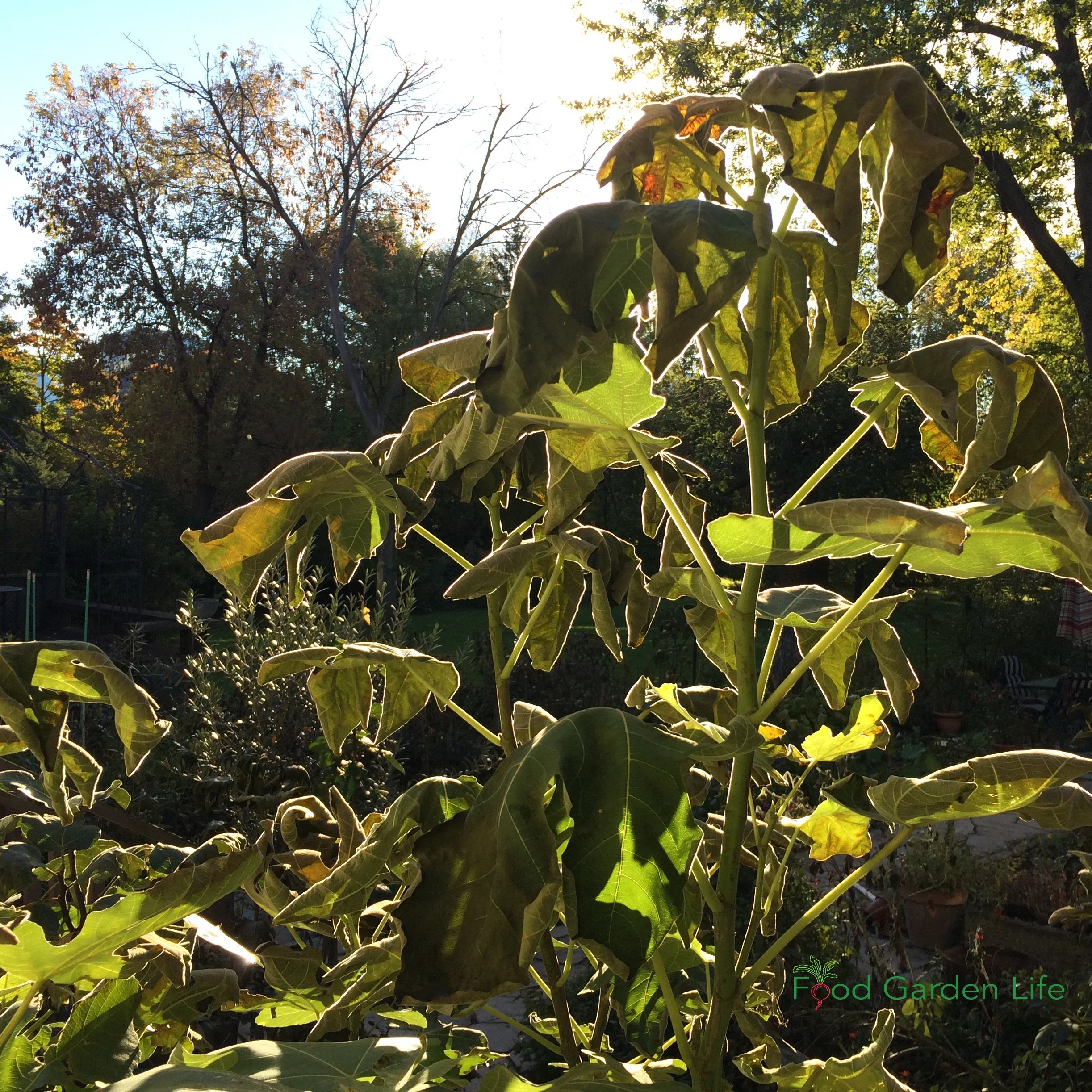As the golden leaves of autumn gracefully surrender to winter’s icy grasp, it’s time to extend our protective care to our beloved fig trees. These Mediterranean natives, renowned for their sweet and succulent fruits, require special attention during the dormant season to ensure their well-being and bountiful harvests in the seasons to come. In this comprehensive guide, we delve into the intricacies of fig tree winter care, empowering you with essential knowledge and practical tips that will keep your tree healthy, vibrant, and ready for the spring’s renewal.

Image: www.foodgardenlife.com
Understanding the Winter Physiology of Fig Trees
Before embarking on our winter care regimen, let’s briefly explore the unique physiology of fig trees that shape their response to the cold. Hailing from the warm embrace of the Mediterranean, fig trees are naturally accustomed to mild winters and can exhibit sensitivity to extreme cold. As temperatures plummet, the tree’s physiological processes slow down significantly, including growth, photosynthesis, and water uptake.
The dormant state allows fig trees to conserve energy and protect themselves from the harsh conditions of winter. However, prolonged exposure to freezing temperatures or sudden temperature fluctuations can cause damage to the tree’s tissues and potentially lead to severe consequences. Therefore, understanding the nuances of winter care and providing appropriate protection is crucial for safeguarding the health of your fig tree.
Comprehensive Winter Care Guide: Step-by-Step
With a thorough understanding of fig tree physiology in winter, let’s delve into the practical steps of ensuring their well-being during this demanding season. Follow these expert-backed tips to give your tree the love and protection it deserves, setting it on the path to a fruitful spring.
1. Mulching: A Warm Embrace for the Roots
As the ground temperatures dip, the roots of your fig tree become susceptible to the cold’s insidious touch. To shield them from damage, create a protective blanket around the base of the tree using a thick layer of organic mulch, such as wood chips, straw, or compost. This insulating layer will help regulate soil temperature, preventing extreme fluctuations that could harm the delicate root system.

Image: www.youtube.com
2. Pruning: A Balanced Approach
While pruning is generally not recommended during winter, there may be exceptions in specific situations. If you notice any dead, diseased, or broken branches, removing them promptly will promote the tree’s health and prevent further damage. However, avoid major pruning during this dormant period, as it can weaken the tree and make it more vulnerable to the cold.
3. Watering: Careful Balance in a Season of Slumber
During winter, fig trees enter a state of reduced water uptake. However, it’s essential to ensure they receive adequate moisture to prevent dehydration and maintain their vitality. Water your fig tree deeply but infrequently, allowing the soil to dry out between waterings. Avoid overwatering, as soggy soil can lead to root rot.
4. Protection from Extreme Cold: Shielding Against Winter’s Fury
In regions where temperatures routinely dip below freezing, additional protection is necessary to safeguard your fig tree from frost damage. Wrapping the trunk with burlap or a specialized tree wrap will provide insulation and shield against the icy onslaught. Additionally, you can construct a temporary enclosure around the tree using stakes and frost cloth to create a microclimate that will protect it from harsh winds and extreme cold.
5. Soil Management: Nourishing the Soil for Spring’s Awakening
As winter progresses, take advantage of the dormant season to enrich the soil around your fig tree. Spread a generous layer of organic compost or manure around the base of the tree to boost soil fertility and provide a wealth of nutrients that will nourish the tree as it awakens in the spring.
Expert Insights and Actionable Tips
To further enhance your fig tree winter care regimen, we sought the wisdom of renowned horticulturalists and arborists. Here are their expert insights and practical tips:
-
“Regular monitoring is essential to detect any potential issues early on,” advises Dr. Emily Burton, a leading fig tree expert at the University of California, Davis.
-
“Avoid excessive pruning during winter, as it can weaken the tree and make it more susceptible to cold damage,” cautions Dr. Brian Maynard, a renowned arborist with decades of experience.
How To Care For Fig Tree In Winter
Conclusion: A Rewarding Journey of Winter Care
Nurturing your fig tree through the winter months is a labor of love that will be amply rewarded come spring. By following the expert guidance outlined in this comprehensive guide, you can ensure the well-being of your tree, setting it on a path to thriving in the seasons to come. Whether you’re an experienced gardener or embarking on your first fig tree care journey, remember that patience and dedication are the keys to success.
As the days grow longer and the warmth of spring approaches, your fig tree will emerge from its winter slumber, invigorated and ready to grace you with its sweet, sun-ripened fruits. The journey of winter care may have its moments of challenge, but the fulfillment of seeing your tree flourish in the years to come will make it all worthwhile.